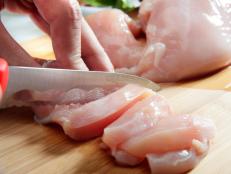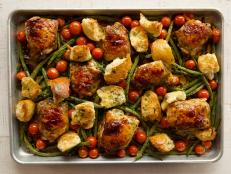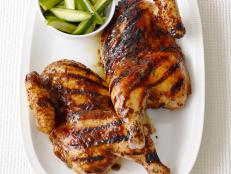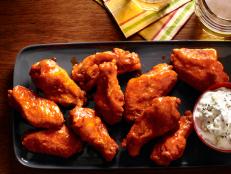This Is the Right Internal Temperature for Cooked Chicken
We break down how to cook chicken to the correct temperature every time.
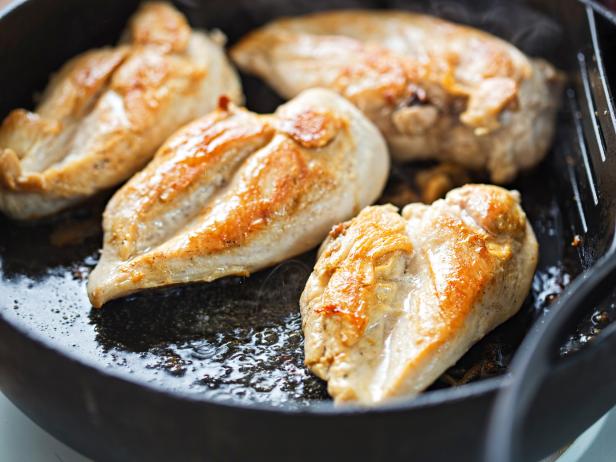
Bartosz Luczak/Getty Images
The best way to determine when chicken is cooked and safe to eat is to check its internal temperature. But what should that temperature be? And does it matter whether you baked a whole chicken in the oven, or cooked chicken breasts on the stovetop? Below you will find all this information and more, so you can feel good about your home-cooked chicken.
What Is the Correct Internal Temperature for Cooked Chicken?
The USDA’s Food Safety and Inspection Service (FSIS) recommends cooking whole chicken and parts of chicken (like the breasts, legs, thighs, wings and giblets), ground poultry, and stuffing to 165 degrees F.
This means that you will need to set your oven between 350 to 450 degrees F to ensure that the inside of the chicken meets the proper temperature. chicken can carry harmful bacteria on the outside, which can potentially make anyone who eats it sick. This is why it is important to cook your chicken properly, in order to destroy bacteria that can cause foodborne illness.
The time needed to cook your chicken depends on your cooking method. For example, four ounces of boneless chicken breast should be roasted at 350 degrees F for 20 to 30 minutes, simmered for 25 to 30 minutes, or grilled for six to eight minutes per side. This is also why it is important to follow the cooking time and temperature listed on a recipe and then to check that the internal cooking temperature has been reached using an instant read thermometer.
Check the internal temperature of the whole chicken in the innermost part of the thigh and wing. For pieces of chicken, check the thickest part of the piece.
How to Marinate Chicken Safely
You can marinate chicken and store it in the fridge for up to two days. Many recipes recommend that extra uncooked marinade be tossed (which will help prevent illness). You can also opt to bring the marinade to a full boil (it should be bubbling for several minutes, depending on how much marinade you have) before brushing it onto cooked chicken. Any uncooked leftover marinade should certainly be discarded.
How to Cook Chicken in the Microwave
Although not a popular way to cook chicken, you can use your microwave to cook it. To ensure the safety of the chicken and that the minimum internal cooking temperature is met, follow these guidelines:
Microwave on medium-high (70% power). A whole chicken should be microwaved for nine to 10 minutes per pound; bone-in parts for eight to nine minutes per pound; boneless breast halves for six to eight minutes per pound.
Use a bag or cover. Place whole chicken in an oven cooking bag or in a covered microwavable pot.
Don't microwave a stuffed chicken. Food tends to cook quickly and unevenly in a microwave and the stuffing may not reach the safe minimum internal cooking temperature to destroy the bacteria that may make you sick.
Put the thinnest pieces in the middle of the dish or rack. If you are microwaving parts of the chicken, arrange them in a dish or on a rack so thick parts of the chicken are towards the outside of the dish and thinner parts of the chicken are in the center
Use liquid with boneless breast halves. If you are cooking boneless breast halves, place them in a dish with 1/4 cup of water or liquid (like chicken stock) and then cover with microwave safe plastic wrap.
Let rest in closed microwave. After cooking your bone-in or boneless chicken, allow the bone-in chicken to stand inside the microwave for 10 minutes and for boneless breast to sit for five minutes. This will allow the heat to be distributed in the microwave.
Check the temperature. Always check the doneness of the chicken by using a food thermometer.
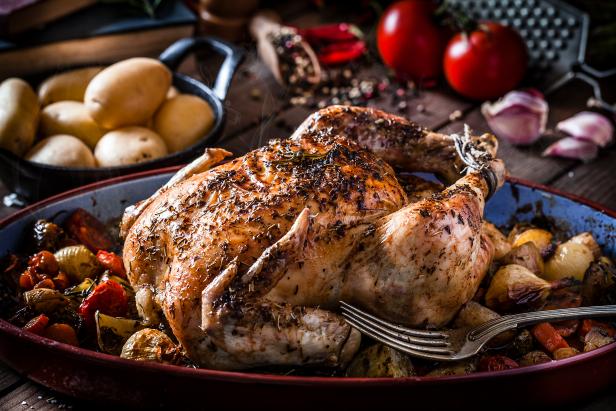
fcafotodigital/Getty Images
How to Cook Stuffed Chicken
The USDA Meat and Poultry Hotline does not recommend buying a whole, uncooked stuffed chicken at the grocery store as it is highly perishable. It is also not recommended to pre-stuff whole chicken to cook at a later time.
According to the USDA’s Food Safety and Inspection Service, if you choose to stuff chicken, do so immediately before cooking. If you do choose to stuff your chicken, cook any raw, perishable ingredients (like raw meat, shellfish or poultry) for the stuffing to decrease the risk of foodborne illness. The wet ingredients for the stuffing can be prepared ahead of time and kept refrigerated until used. But do not mix the wet and dry ingredients just until you are ready to spoon the stuffing mixture into the chicken cavity. Immediately cook the stuffed, raw chicken in an over that is set no lower than 325 degrees F.
Why Chicken Temperature Matters
Cooking chicken to the correct minimum internal temperature necessary is an important way to help prevent foodborne illness. The best way to check if your chicken reaches the correct minimum internal cooking temperature is by using a food thermometer.
Related Content:
























